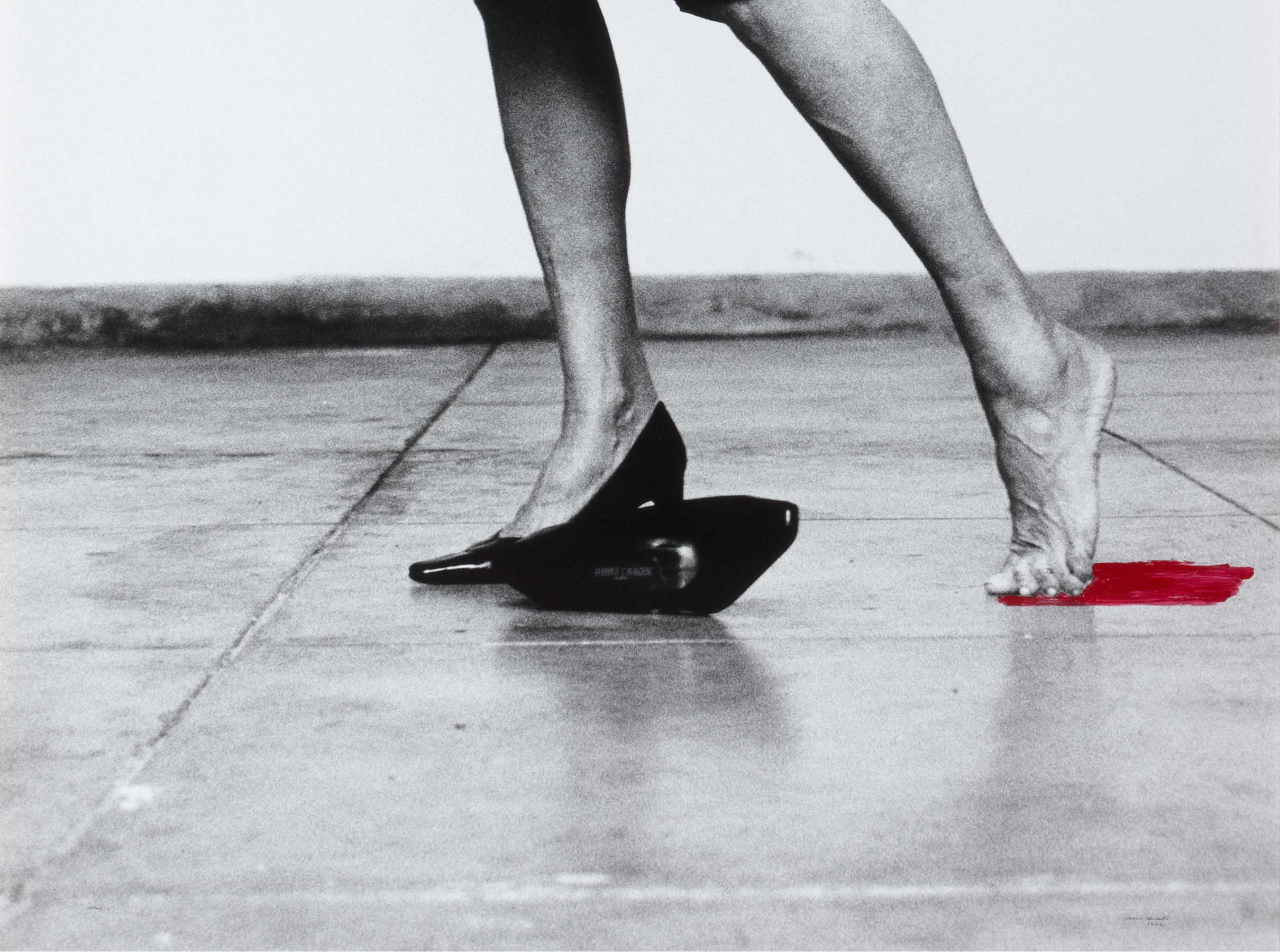Kukulkan (serpiente emplumada) [Kukulkan (the Feathered Serpent)]
- 2017
- Mahogany wood and wool threads
- 195 x 124 x 21 cm
- Cat. E_159
- Acquired in 2020
Kukulkan (Feathered Serpent), from the Kukulkan Series, is an artwork with a textile calling, a feathered serpent in a warp that invokes the history of resistance by the Abya Yala peoples. It is also a visual voice emanating from the land of the Maya Tz’utujil, seeking to open a dialogue with the world of the historical “other” – the contemporary West. The serpent is mounted on a flat wooden structure with deliberate protrusions marking moments of connection and disconnection between the threads and their paths. Additionally, this piece is a reinterpretation of the archetype of the q’inb’al (warping board), a systematic framework that is a basic technology invented by early societies around the world. In an informal conversation, David Marín noted that the warping board enabled the use of various plant fibers to weave clothing, the development of biodiverse agricultural systems, the improvement of storage technologies, and the increasing complexity of social organizations.
A warping board in the shape of a serpent that moves through planes and corners is intentional. Formed by vertices, its discontinuous anatomy reinterprets – irreverently, given Christian demonization of the serpent – the representation of time, space, water, and rain for the indigenous peoples of Abya Yala. Neither is Kukulkan a god, as the indigenous peoples of Abya Yala are not polytheists, but instead define and relate to myriad forms of life in terms of time, shape, structure, weight, and so on. Thus, for these peoples Kukulkan is a being of diverse life that watches over time, space, water, and rain. Juan Xón, an Aj q’ij K’iche’ (daykeeper or spiritual guide), described Kukulkan as a messenger from whom one must learn guile and wisdom, because the serpent “flies without wings, eats without hands, and walks without feet” (1996). Kukulkan is also the guardian of fertility and of life, for if water did not return to the earth, there would be no life.
Kukulkan invites consideration as a “Maya hacker.” Diane Nelson notes that “like computer hackers who deploy intimate understandings of technologies and codes while working within a system they do not control, the Maya are appropriating so-called modern technology and knowledges….”1 The Maya become what Trinh Minh-ha (1986) has termed “the Inappropriate/d Other.”2 In some ways, Kukulkan serves as a reminder of the existence of the Other as discomfort, as redefining oneself and at the same time redefining the identity and existence of indigenous peoples in contemporary Spanish-speaking culture. Kukulkan comes to Madrid as a contemporary conceptual object to rewrite the history of a people.
The work is also a metaphor for memory and knowledge that for Pichillá represents the continuity of his relationship with his weaver grandmother and the legacy to her descendants. “Who among the Tz’utujil weave? It was the men,” reflects Pichillá. To weave, to take up the warping board, redefines the historical status quo within indigenous societies. For a man to weave is a reality that breaks with the traditional precept that only women should do so. Kukulkan is an encounter with historical memory that weaves together time and space through shapes and colors, an encounter with a time and a people in permanent and dynamic resistance in an effort to remain Maya Tz’utujil in today’s globalized world.
1. Diane M. Nelson, Cultural Antropology, Maya Hackers and the Cyberspatialized Nation-State: Modernity, Ethnostalgia, and a Lizard Queen in Guatemala, American Anthropological Association, 1996.
2. Ibid, pp. 288-289.
Other works by Antonio Pichilla

![Kukulkan (serpiente emplumada) [Kukulkan (the Feathered Serpent)]](/f/webca/INF/assets/img/fff.png)